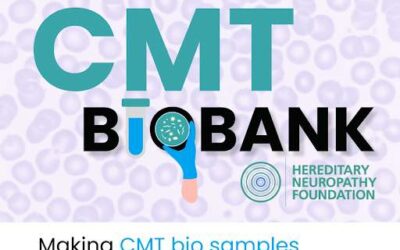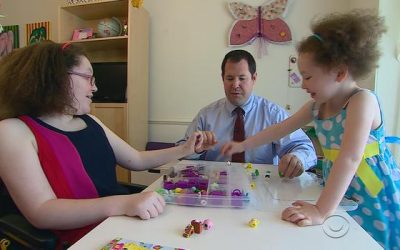Giant axonal neuropathy (GAN) is recessive and severe resulting in progressive nerve death. It generally appears in early childhood. The protein that isn’t functioning in GAN is called gigaxonin. It’s believed that the absence of functional gigaxonin is interfering with the signaling between peripheral nervous symptoms (arms, legs, etc.) and the central nervous system (brain and spinal cord). Unlike most CMTs it affects the central autonomic nervous system which may result in loss of sensation, coordination, strength, and reflexes in limbs.
Hearing and visual problems typically occur. Extremely kinky hair (as compared to others in the family) is characteristic of GAN, but not all confirmed GAN cases have kinky hair.
As the disorder progresses, patients become quadriplegic, dependent on a feeding tube and ventilator before dying typically in the second or third decade.
HNF Research Initiatives
Natural History Studies
The Global Registry for Inherited Neuropathies (GRIN)
The Global Registry for Inherited Neuropathies (GRIN) was developed in 2013 in partnership with Hannah’s Hope Fund (HHF) to stratify large groups of patients for all types of CMT, including GAN to gain a deeper understanding of how CMT & GAN affects quality of life. This important data also allows HNF to better identify the burden, diagnostic journey, and prevalence of CMT & GAN that will aid TRIAD and HHF research partners.
Patient data = Improved Research & Clinical Trial Design.
HHF along with Steven Gray, PhD successfully launched the First-In-Human Gene Therapy for inherited neuropathy. To learn more on the AAV9/GAN gene therapy, link to clinical trial identifier: NCT02362
The CMT Genie
was developed to help identify patients’ variants of CMT and for them to gain a better understanding of their disease. By confirming the cause, patients may be eligible to enroll in research studies and clinical trials, such as the AAV9/GAN gene therapy. GAN is a very rare inherited neuropathy. There now are a few milder progressing, confirmed GAN cases, as well as a few confirmed cases without kinky hair.
CMT experts believe that some CMT Type 2 (unknown variant) may actually have GAN. Patients that have been clinically diagnosed with CMT and told they have nystagmus (involuntary eye movements when looking sideways) and/or optic motor atrophy may be eligible for free genetic testing.
If you don’t know your CMT type, you can find out from the HNF through The CMT Genie Program.
www.cmtgenie.org2025 CMT Roadshow Coming to a City Near You?
Do you want to make a difference in CMT research? HNF is looking for patients with a confirmed CMT diagnosis to participate in the CMT Biobank
Summit Speaker Spotlight: Lori Sames of Hannah’s Hope Fund
HNF has the honor of knowing one such GAN patient, Hannah Sames. She was diagnosed with GAN at four years old, and now at age eleven, Hannah can no longer walk on her own.
CBS News Report: A Mother’s Quest To Find Cure For Rare Genetic Defect
Raising global awareness of inherited neuropathies is a daily challenge we face head on at The Hereditary Neuropathy Foundation. Recognizing and understanding the people living with these debilitating and sometimes fatal disorders are paramount to finding treatments...
Hereditary Optic Neuropathy
Optic neuropathy is one of the symptoms of a less common form of Charcot-Marie-Tooth disease known as CMT6.
Breaking News: First Therapeutic Gene Therapy to Treat an Inherited Neuropathy is Approved for Clinical Trial!
The first disease community to receive a therapeutic gene to the spinal cord for an ultra rare inherited neuropathy is Giant Axonal Neuropathy (GAN). Congratulations to Hannah’s Hope Fund (HHF), a 501(c)3 public charity, which has driven this collaborative research in less than six years. Six million dollars has been raised to date to fund pre-clinical and clinical research on this rare disease.



